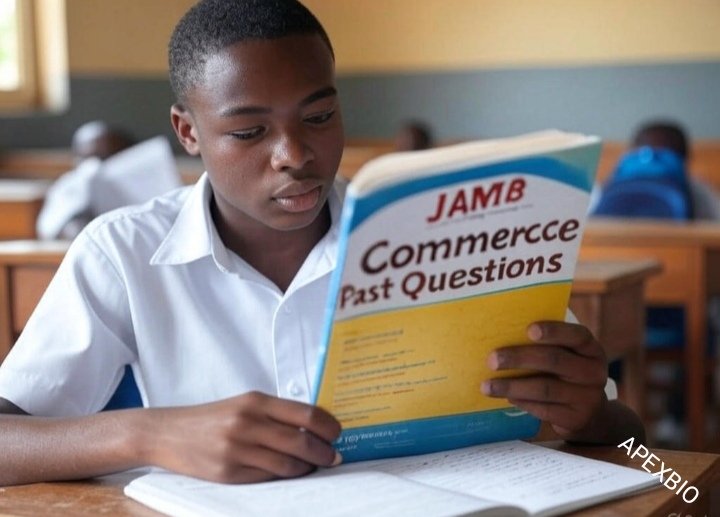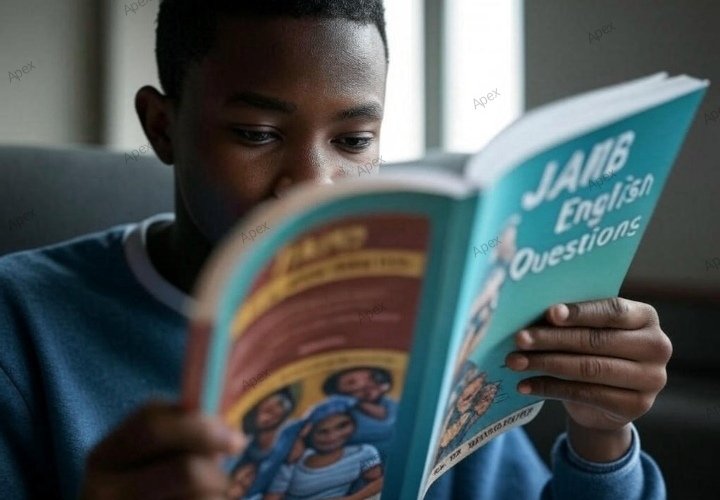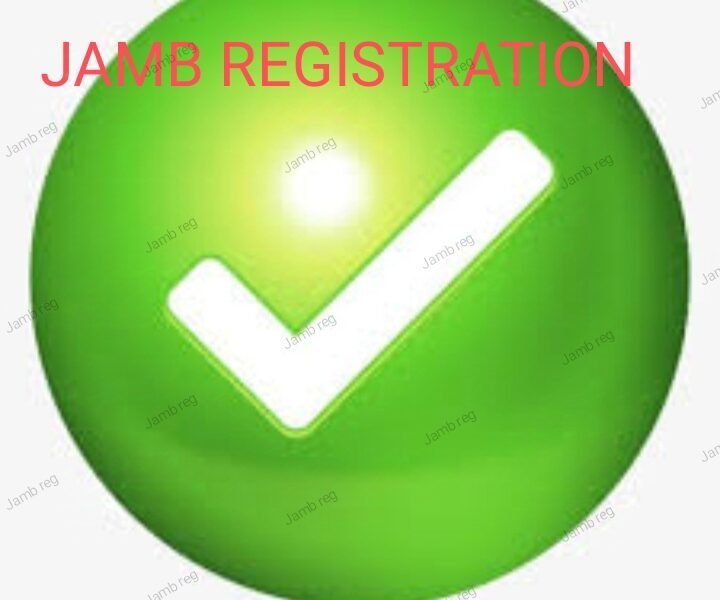Economics JAMB Past Questions
Economics is a subject studied in Nigerian secondary schools, particularly by students in the arts and social sciences. It focuses on how resources are produced, distributed, and used, as well as how individuals and governments make economic decisions. This subject is essential for students who plan to study courses like Business Administration, Economics, Accounting, or Banking and Finance in the university. It is also a key subject for exams like WAEC, NECO, and JAMB, as it provides the basic knowledge needed for these fields.
For JAMB applicants writing economics, the following questions are crucial because JAMB repeats them every year.
1. Economics is best defined as the study of how societies
(a) Accumulate wealth
(b) Distribute goods and services equally
(c) Allocate scarce resources to satisfy unlimited wants
(d) Create employment opportunities
The correct answer is: (c) Allocate scarce resources to satisfy unlimited wants
2. Opportunity cost refers to the
(a) Monetary cost of producing goods and services
(b) Total cost of all economic activities
(c) Value of the next best alternative forgone
(d) Additional benefit from consuming one more unit
The correct answer is: (c) Value of the next best alternative forgone
3. The basic economic problem of scarcity arises because
(a) Resources are limited while human wants are unlimited
(b) Resources are evenly distributed among nations
(c) Human wants are limited
(d) Markets fail to allocate resources
The correct answer is: (a) Resources are limited while human wants are unlimited
JOIN US ON THESE SOCIAL MEDIA PLATFORMS
Twitter@apexbio24
4. In a market economy, the allocation of resources is determined by
(a) The government
(b) The price mechanism
(c) Social planners
(d) Tradition and culture
The correct answer is: (b) The price mechanism
5. The satisfaction derived from consuming a good or service is referred to as
(a) Utility
(b) Demand
(c) Profit
(d) Efficiency
The correct answer is: (a) Utility
6. Which of the following is not a factor of production?
(a) Land
(b) Labour
(c) Capital
(d) Money
The correct answer is: (d) Money
7. The reward for capital as a factor of production is
(a) Rent
(b) Wages
(c) Profit
(d) Interest
The correct answer is: (d) Interest
8. In economics, the term “demand” refers to
(a) The amount of goods a consumer can afford
(b) The quantity of goods consumers are willing and able to buy at a given price
(c) The total supply of goods in a market
(d) A situation where goods are scarce
The correct answer is: (b) The quantity of goods consumers are willing and able to buy at a given price
9. The law of demand states that
(a) Supply creates its own demand
(b) An increase in price leads to an increase in demand
(c) An increase in price leads to a decrease in demand
(d) Demand is independent of price changes
The correct answer is: (c) An increase in price leads to a decrease in demand
Please take note of Q10-20. Carefully study them. You can go to this site for more conceptual clarifications.
10. Elasticity of demand measures
(a) The responsiveness of demand to changes in price
(b) The total demand for a product in a market
(c) The changes in supply due to demand fluctuations
(d) The demand for luxury goods
The correct answer is: (a) The responsiveness of demand to changes in price.
11. A normal good is one whose demand
(a) Decreases as consumer income increases
(b) Increases as consumer income increases
(c) Remains constant regardless of income changes
(d) Is inversely related to its price
The correct answer is: (b) Increases as consumer income increases
12. The point where the demand and supply curves intersect is called
(a) Market shortage
(b) Market surplus
(c) Equilibrium price
(d) Production possibility frontier
The correct answer is: (c) Equilibrium price
13. A production possibility curve shows
(a) The relationship between supply and demand
(b) The maximum combinations of goods a country can produce with its resources
(c) The economic growth rate of a country
(d) The level of inflation in an economy
The correct answer is: (b) The maximum combinations of goods a country can produce with its resources
14. Which of the following is a characteristic of a command economy?
(a) Private ownership of resources
(b) Market-driven prices
(c) Central planning of economic activities
(d) Competition among firms
The correct answer is: (c) Central planning of economic activities
15. Inflation is best defined as
(a) A rise in the standard of living
(b) A persistent increase in the general price level of goods and services
(c) A rise in the demand for goods and services
(d) A decrease in the value of money
The correct answer is: (b) A persistent increase in the general price level of goods and services
16. A decrease in demand while supply remains constant will lead to
(a) A fall in price
(b) A rise in price
(c) No change in price
(d) A rise in quantity supplied
The correct answer is: (a) A fall in price
17. The primary function of money is to
(a) Serve as a medium of exchange
(b) Act as a source of wealth
(c) Generate profits for banks
(d) Create employment
The correct answer is: (a) Serve as a medium of exchange
18. Which of the following best describes GDP?
(a) The total value of goods and services produced in a country within a given period
(b) The income earned by a country’s citizens abroad
(c) The market value of exports and imports
(d) The growth rate of an economy
The correct answer is: (a) The total value of goods and services produced in a country within a given period
19. A monopolist is a producer who
(a) Faces no competition in the market
(b) Sells products at a price set by the government
(c) Produces only luxury goods
(d) Operates in a perfectly competitive market
The correct answer is: (a) Faces no competition in the market
Question 20-40 have been reoccuring since 2010
20. When an economy experiences negative growth for two consecutive quarters, it is referred to as
(a) Depression
(b) Recession
(c) Inflation
(d) Stagnation
The correct answer is: (b) Recession
21. Which of the following is an example of a public good?
(a) A car
(b) A school
(c) National defense
(d) A bank
The correct answer is: (c) National defense
22. In perfect competition, the price of a product is determined by
(a) The government
(b) Individual sellers
(c) Market forces of demand and supply
(d) The largest producer in the market
The correct answer is: (c) Market forces of demand and supply
23. A situation where a single buyer dominates the market is called
(a) Monopoly
(b) Oligopoly
(c) Monopsony
(d) Perfect competition
The correct answer is: (c) Monopsony
24. A decrease in supply while demand remains constant will lead to
(a) A rise in price
(b) A fall in price
(c) No change in price
(d) A fall in demand
The correct answer is: (a) A rise in price
25. The marginal cost of production refers to
(a) The total cost of producing a product
(b) The cost of producing one additional unit of a product
(c) The profit made from producing an additional unit
(d) The fixed cost of production
The correct answer is: (b) The cost of producing one additional unit of a product
26. Which of the following best describes a mixed economy?
(a) An economy where only private individuals own resources
(b) An economy controlled entirely by the government
(c) An economy where both private individuals and the government own resources
(d) An economy dominated by large multinational corporations
The correct answer is: (c) An economy where both private individuals and the government own resources
You might want to go through reoccuring CRS past questions
27. The term “budget deficit” refers to
(a) When government revenue exceeds expenditure
(b) When government expenditure exceeds revenue
(c) A situation where taxes are abolished
(d) A government’s inability to collect taxes
The correct answer is: (b) When government expenditure exceeds revenue
28. Price elasticity of supply measures
(a) The responsiveness of supply to changes in price
(b) The responsiveness of demand to changes in price
(c) The total supply in a market
(d) The relationship between supply and costs
The correct answer is: (a) The responsiveness of supply to changes in price
29. Which of the following is a characteristic of oligopoly?
(a) A single producer dominates the market
(b) Many small firms compete in the market
(c) A few large firms dominate the market
(d) Buyers have complete control over prices
The correct answer is: (c) A few large firms dominate the market
30. The primary goal of a firm in a capitalist economy is to
(a) Maximize profit
(b) Minimize competition
(c) Provide public goods
(d) Promote equality
The correct answer is: (a) Maximize profit
31. A decrease in interest rates is likely to
(a) Reduce consumer spending
(b) Increase borrowing and investment
(c) Increase savings
(d) Decrease inflation
The correct answer is: (b) Increase borrowing and investment
32. A key feature of a free market economy is
(a) Government control of resources
(b) Absence of private ownership
(c) Competition among producers
(d) Fixed prices for goods and services
The correct answer is: (c) Competition among producers
33. Which of the following is a cause of unemployment?
(a) High levels of inflation
(b) Increased government spending
(c) A mismatch of skills between workers and job requirements
(d) High interest rates on loans
The correct answer is: (c) A mismatch of skills between workers and job requirements
34. The concept of comparative advantage suggests that
(a) Countries should produce goods for which they have the lowest opportunity cost
(b) Countries should specialize in producing goods with the highest demand
(c) Trade is not beneficial for smaller economies
(d) Countries should import goods they can produce locally
The correct answer is: (a) Countries should produce goods for which they have the lowest opportunity cost
Go through refined questions on government
35. A market structure where there is only one seller is called
(a) Monopoly
(b) Perfect competition
(c) Oligopoly
(d) Monopsony
The correct answer is: (a) Monopoly
36. Fiscal policy refers to the use of
(a) Monetary policy to control inflation
(b) Government spending and taxation to influence the economy
(c) Exchange rates to promote trade
(d) Banking regulations to control credit
The correct answer is: (b) Government spending and taxation to influence the economy
37. The World Trade Organization (WTO) primarily focuses on
(a) Regulating global monetary policy
(b) Resolving trade disputes between nations
(c) Providing loans to developing countries
(d) Monitoring international currency exchange rates
The correct answer is: (b) Resolving trade disputes between nations
38. The balance of payments of a country refers to
(a) The difference between imports and exports
(b) A record of all economic transactions between residents and the rest of the world
(c) The amount of foreign reserves held by the central bank
(d) The interest rate on government debt
The correct answer is: (b) A record of all economic transactions between residents and the rest of the world
39. Which of the following policies can reduce inflation?
(a) Reducing interest rates
(b) Increasing government spending
(c) Increasing taxes
(d) Printing more money
The correct answer is: (c) Increasing taxes
40. The Human Development Index (HDI) measures
(a) The economic growth of a country
(b) The level of inequality in a country
(c) Life expectancy, education, and standard of living
(d) The trade balance of a country
The correct answer is: (c) Life expectancy, education, and standard of living
You might also be interested in learning about items banned by JAMB
More questions will be posted on our page
However, you can comment below on specific past questions, courses and years you need.
Or you can contact us at evidencechidozie@gmail.com






